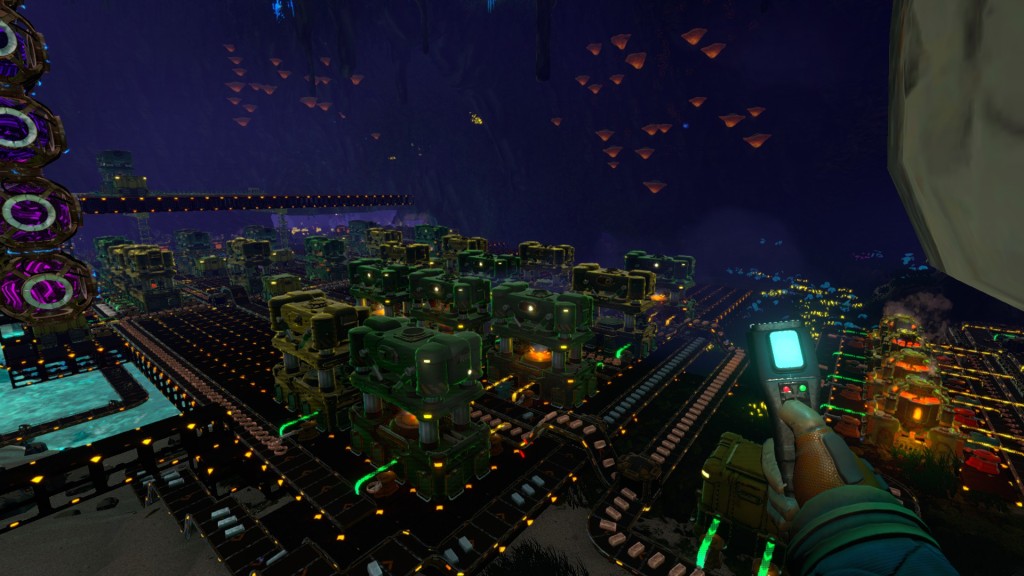I picked Techtonica up in the Steam Winter Sale, though it launched in EA back in July. I’ve got something for production optimization games, obviously. It recently hit v0.3, which is all about efficiency, my kind of patch!
For starters, Techtonica is what Satisfactory (mod-free) would be on a smaller map and much, much less finicky controls. Factorio-3D to a large degree. This reduced scale improves accessibility, because you don’t need to build a 72-step factory in the early game that takes up all your screen space. Techtonica instead focuses on exploration and gradual automation. Progress is gated behind milestones, each bound to a specific station. You start with Lima, which acts as a tutorial. Victor is next, and the game effectively opens nearly every aspect here, and gives you the space to build a multi-floor factory. Xray is next, and that is about large scale automation with monorails. The milestones aren’t incredibly burdensome, you’ll need 200 of a given item and most production rates are enough that you can get buy with a half dozen harvesters. Compare this to Satisfactory where you needed dozens upon dozens of harvesters/foundries to get even the most basic elements running.
An extremely large quality of life feature is that the game is more or less voxel based, meaning there’s no real possibility of being mis-aligned or not clearly understanding how space is managed. You can’t clip objects, which re-enforces the mathematical optimization. Vertical belts (rather than super spaghetti) allow for cleaner and more optimized multi-story factories. The ability to quickly copy objects is the first step for blueprints (which really only matter in large scale things), and the replacer tool almost acts as an upgrade mechanic.
Now, Dyson Sphere Program (if you turn off Dark Fog) is still the gold standard here, and Techtonica has some rather large QoL bits to figure out. Some items require tremendous amounts of material and the results can stack to crazy amounts (you’ll know when you make monorail bits), which makes it hard to manage crafting chains. Research is done through cores, which must be physically placed in the world, taking up huge chunks of room. Assemblers have rate inputs that simply cannot be met by inserter tools, certainly the long variants, which adds unnecessary puzzle mechanics and overly complicate production chains (you’ll need many storage containers to manage overflow).

One piece that annoys me to a great degree in these games is the concept of intermediary steps, especially those that are single material ones. The only purpose they hold is to create artificial time gates – or allow scaling when belts/inserters cannot provide. For example, Iron Mechanisms. They need 100x Iron Components. Those require 2 Iron Ingots, which come from 2 Iron Ores. Do the math, and each Mechanism takes 400 Iron Ores. Related, when you encounter one of these steps, your prior balanced production rates of say, 10x/minute now require 100x/minute, which means more scaling is required.
Now that is an issue with the genre as a whole, and if the tooling is there to manage the scale issues, then no real biggie. Again, Dyson Sphere Program completely knocks it out of the park when it comes to scaling tools, which Satisfactory is the lead-chip-eating-cousin. It remains to be seen how Techtonica addresses scaling as more content is added… because it’s not like you have infinite space to build with.
As for a roadmap, with “Desert MIRAGE” as a content point, I am assuming that open space may be on the horizon. Given prior history, it’s likely 6 months away. At this point, I’d recommend a watchlist rather than giving it a shot. It’s good, but unless you really love the genre and willing to have the odd bug muck-up an optimized belt maze, well… your library is likely chock full of options.

